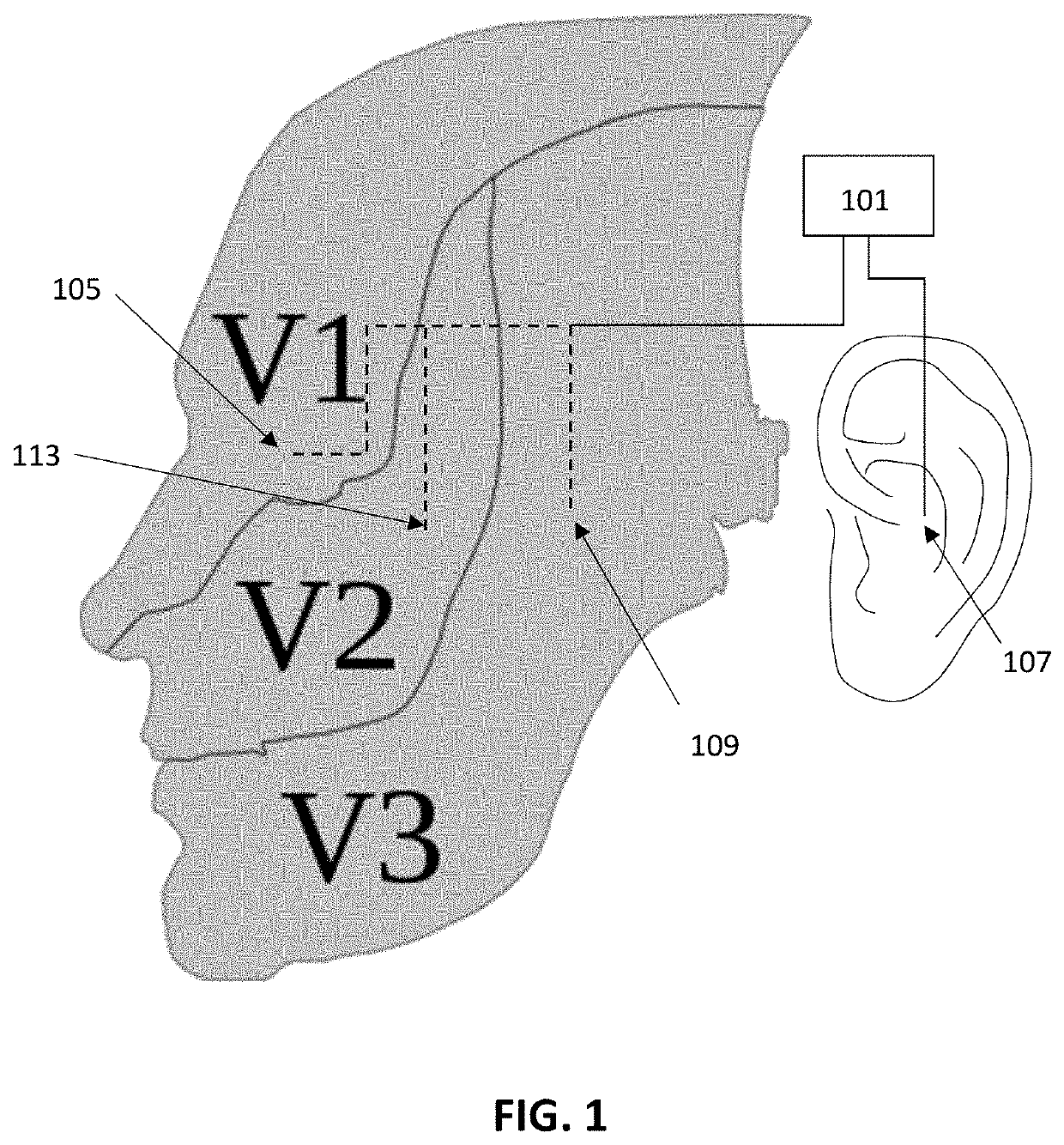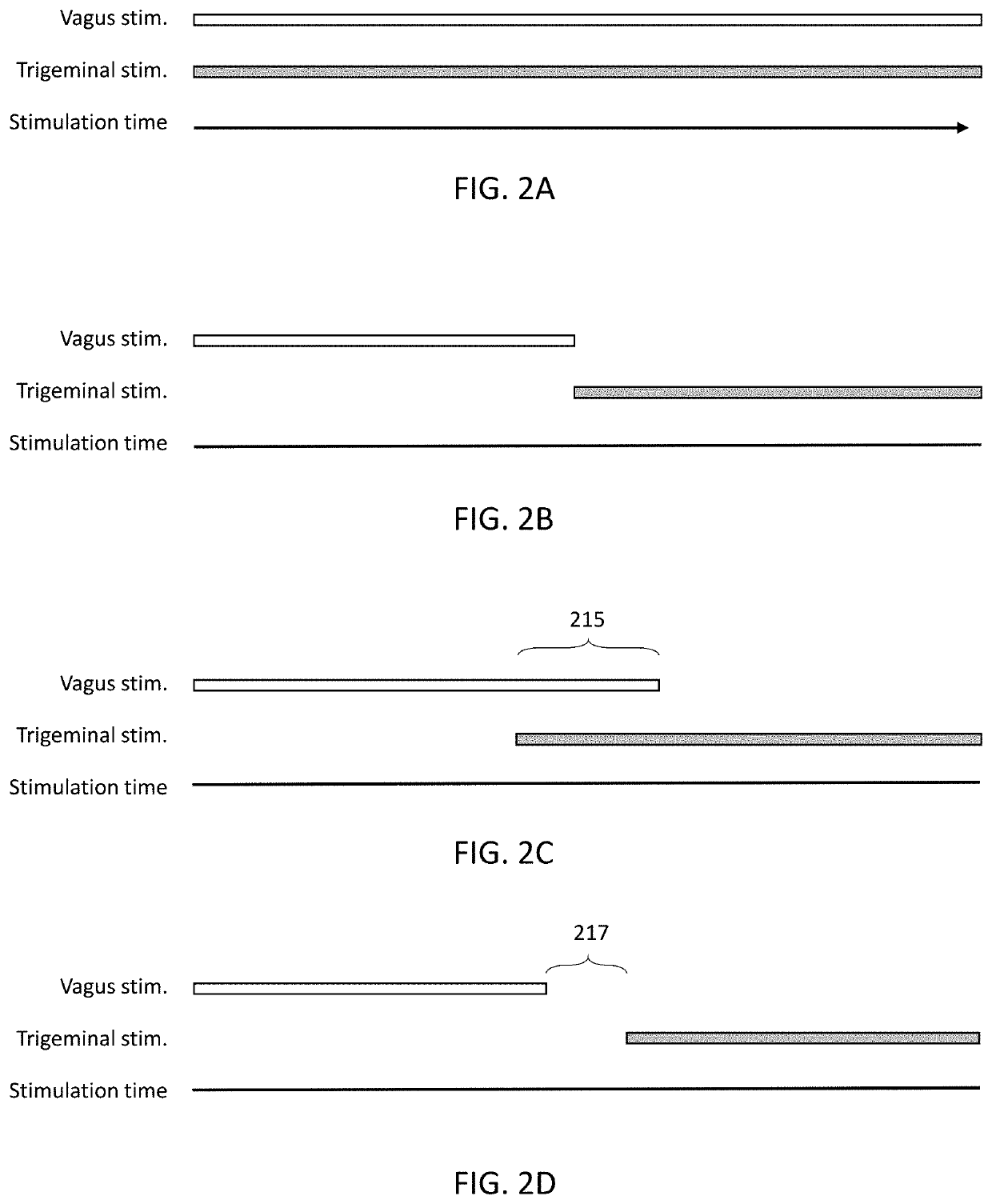Methods and apparatuses for reducing bleeding via coordinated trigeminal and vagal nerve stimulation
a technology of coordinated trigeminal and vagal nerve stimulation and reducing bleeding, applied in the field of preventing and/or treating bleeding, can solve the problems of inability to administer prophylactic systemic therapies, inability to regulate or ultimately die, and generally have an inherent risk of bleeding, so as to reduce bleeding time, reduce bleeding time, and reduce bleeding time
- Summary
- Abstract
- Description
- Claims
- Application Information
AI Technical Summary
Benefits of technology
Problems solved by technology
Method used
Image
Examples
examples
[0057]FIG. 3A illustrates one example of a combined trigeminal and vagus nerve stimulator for treating bleeding (e.g., for reducing bleed time) as described. In FIG. 3A, the apparatus include a housing that is configured or adapted to fit over, behind and at least partially into the patient's auricle region of the ear. The housing may include an ear retainer 312 for holding the device in / on the ear 360, and may at least partially enclose a controller (e.g., control circuitry, a battery, power control circuitry, waveform generator, a trigeminal stimulation drive and vagus stimulation drive). The apparatus also includes a vagus stimulator 307 that is coupled to the housing in this example, to be applied against the patient's ear. A connector (e.g., cable, wire, etc.) connects a trigeminal stimulator 308 that may be worn on the patient's face (e.g., in the V1, V2 and / or V3 region, as shown in FIG. 1). The controller may be connected (via a wire or wireless connection) to a user interfa...
PUM
 Login to View More
Login to View More Abstract
Description
Claims
Application Information
 Login to View More
Login to View More - R&D
- Intellectual Property
- Life Sciences
- Materials
- Tech Scout
- Unparalleled Data Quality
- Higher Quality Content
- 60% Fewer Hallucinations
Browse by: Latest US Patents, China's latest patents, Technical Efficacy Thesaurus, Application Domain, Technology Topic, Popular Technical Reports.
© 2025 PatSnap. All rights reserved.Legal|Privacy policy|Modern Slavery Act Transparency Statement|Sitemap|About US| Contact US: help@patsnap.com



